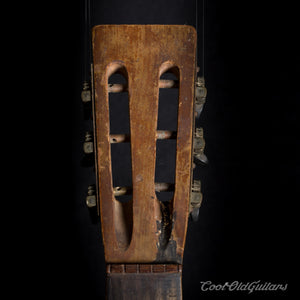

Bear in mind that Elmer Stromberg’s massive Master 400 archtop, designed to project through the increasing din of the big-band era, measured a mere 19”. Its gigantic body, measuring 19 ¼” across, puts it in a class with the largest guitars ever built. It is curiously both deluxe and plain.īut what is it? It’s wide, flat fingerboard straddles the body at the 12th fret, its relatively thick V-shaped neck is topped with a squared-off slotted headstock, and its antiquated nickel-plated tuners, with pinion gears above the worm gears – are all indicative of a small, turn-of-the-century parlor guitar. Its configuration of flimsy, stamped-steel trapeze tailpiece and simple movable bridge (usually the hallmark of a budget flat-top) stands in stark contrast to the high quality and craftsmanship demonstrated throughout the guitar. Its unbound 18-fret fingerboard –also of rosewood – sports only a few small, round dots for position makers, yet intricate multicolored wood purfling graces much of the rest of the instrument, including the top body edge, rosette, and back centerseam. Restore this beautiful old instruments and bring them back to life.So what is it? Its original black-finished spruce top is simply ladder-braced from within, but its back and sides feature Brazilian rosewood with dramatic bookmatched figure. It is much easier to find old Martins and Gibsons. Today it is very hard to find playable examples of Oscar Schmidt made guitars. Availability, affordable price and equally important, superior tone and volume made the Stella guitar to the instrument of choice for many bluesmen. The OS Company sold their instruments in many rural parts of the southern United States, making them available in general, small town furniture stores and even gas


Stella, Stella guitars were produced by the Oscar Schmidt Instrument Company in Jersey City. Types of guitars were used to play the old, rural blues, but the predominant instruments during the 1920's and 1930's were Stellas. The sound of a modern x-braced guitar is far away from the guitar sound you can hear on many Pre-WW II era blues recordings.


 0 kommentar(er)
0 kommentar(er)
